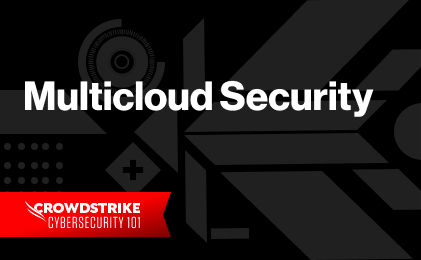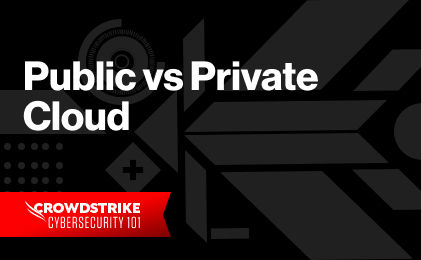Understand CNAPPs with Our Guide
Understand CNAPPs with Our Guide
What Is Hybrid Cloud Security?
Hybrid cloud security is the collection of tools and processes designed for the protection of data and infrastructure that combines elements of private cloud, public cloud, and on-premises infrastructure into a unified architecture. A hybrid cloud is the IT environment combining these elements. The hybrid cloud offers high flexibility in moving workloads to different environments quickly while taking advantage of better features provided in those environments.
There are strong motivations to use a hybrid cloud architecture, but it also comes with additional security challenges that will be discussed in this article. Let’s start with the use cases for a hybrid cloud.
Hybrid Cloud Security Challenges
The hybrid cloud does not solve or improve any security drawbacks of the mono-cloud infrastructure. On the contrary, the hybrid cloud presents the following hybrid cloud security challenges.
When applications are distributed over multiple clouds, they need to connect to each other and transmit data. This means, the traffic between clouds should be secure and encrypted. Creating an end-to-end secure connection between multiple cloud infrastructures becomes challenging, primarily when the networking models differ.
Security features of each cloud offering focus on protecting their own services and infrastructure. For instance, you can limit access to cloud resources using AWS IAM roles, but they work only for the workload running inside AWS infrastructure.
Networking configurations—already challenging in a single cloud service—become more complicated when there are various cloud offerings. For instance, to create private cloud environments, you need to configure Amazon Virtual Private Cloud (VPC), Azure Virtual Network (VNet), and Google Virtual Private Cloud (VPC) separately. Security breaches are unavoidable when insufficient attention is given to these environments or some parameters are skipped.
When multiple cloud infrastructures are connected, real-time threat detection systems could raise false alarms by wrongly identifying the traffic between cloud(s) and/or on-premises as malicious, or at least out of the ordinary. When the overall infrastructure becomes more complex, monitoring and alerting systems should be configured in great depth to catch real security breaches.
Cloud secret managers like GCP Secret Manager or AWS Secrets Manager are great tools to store passwords, keys, certificates, or any other sensitive data. However, these are designed to work in their own cloud platforms. In order to distribute and manage secrets over hybrid infrastructure, you need to implement central and external tools like Vault.

Top 4 Security Issues in the Cloud
Read more about the top 4 threats to your cloud security journey:
Download Now3 Components of Hybrid Cloud Security
There are three essential components to create a unified infrastructure that will work in harmony: physical, technical, and administrative controls.
1. Physical Controls
Service-Level Agreements
Your organization might have a service level agreement (SLA) with your public cloud provider. It’s essentially an agreement outlining physical security standards that need to be met. This helps in preventing certain employees that do not have permission from accessing physical hardware, which can be detrimental if it reaches the wrong hands.
2. Technical Controls
Networking
The connection between multiple cloud infrastructures makes them a hybrid cloud setup. Direct network connections between on-premises and clouds or VPN tunnels are the most common solutions and are mostly used together where the direct connection is the primary method and the VPN is a standby.
Encryption
Encryption lets you encode data so only authorized parties are allowed to access it. When there are different infrastructures and cloud services connecting to each other, it’s easy to use an external solution—which can also be offered by one of the cloud providers in your hybrid cloud landscape—for secure and encrypted communication.
Authentication
A hybrid cloud creates an environment where applications can consume services from other cloud providers. For instance, let’s assume the workload on cloud A (or on-premises) needs to be authenticated to cloud B, which is done through a set of credentials.
You must manage those credentials carefully, especially in terms of how they are distributed. Because leaking such credentials could have potentially devastating consequences. You also have to rotate them on a regular basis. Therefore, there’s a solid need for hybrid cloud security architecture to connect applications living on different infrastructure.
Cloud discovery and visibility are required to manage, configure, and monitor these components in a distributed infrastructure. Falcon Cloud Security focuses on cloud security posture management (CSPM) to detect misconfigurations and potential threats while ensuring compliance across multiple cloud providers like AWS, Azure, and Google Cloud.
3. Administrative Controls
Disaster Preparedness
An essential part of keeping the hybrid cloud working is having a disaster preparedness plan ready to kick in when necessary. The plan should outline key roles and responsibilities so that every stakeholder knows what to do in an event of a disaster. It should also outline key protocols these stakeholders have to follow to ensure full data recovery.
Finally, a disaster preparedness plan should also account for human error. Because the hybrid cloud is extremely interconnected across environments, security should become a focus for every user of the cloud.
Best Practices
Securing a hybrid cloud is challenging with its multiple components and distributed nature. So it’s always a good idea to start with commonly accepted best practices in the industry:
- Networking and security experts should carefully review network topology.
- Make sure to carefully plan the management of secrets—credentials, certificates, keys, passwords—to avoid leaks. You must also rotate certificates and secrets regularly.
- Your team should scan container images for vulnerabilities and deploy only the secure ones. You can check out CrowdStrike Falcon® Container Security for identifying vulnerabilities earlier and automating DevSecOps principles.
- Perform continuous audits for real-time visibility and compliance checks.
- Implement a zero-trust approach for new applications, environments, and tools.
Conclusion
The hybrid cloud brings the best of on-premises systems and cloud providers. But it also comes with additional security challenges compared to running everything in one cloud. Fortunately, the benefits of a hybrid cloud setup might very well justify the additional costs required to secure the overall system. Still, it’s important to involve general security and networking experts, as well as engineers specializing in each of the cloud vendors included in the design of the system.
CrowdStrike provides end-to-end cloud security solutions for workload security, CSPM, and container security. Start a free trial now and get fast and easy protection against all threats in your hybrid cloud environment.







